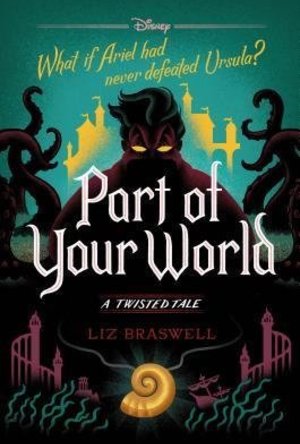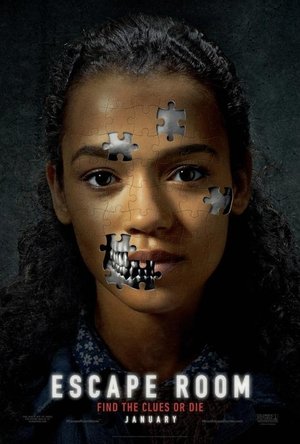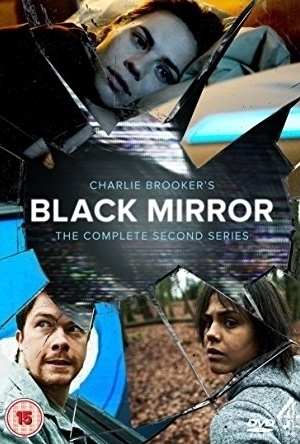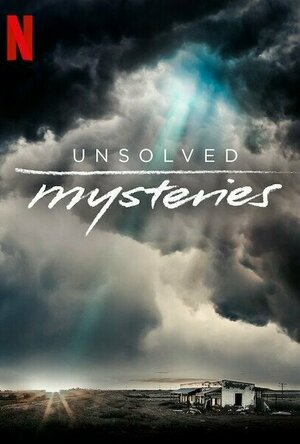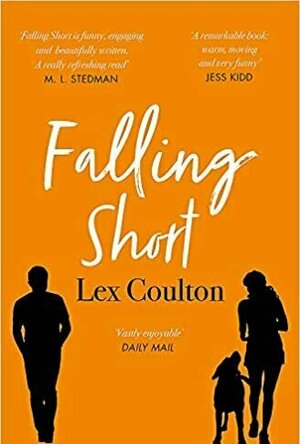Search
Search results
Lottie disney bookworm (1056 KP) rated Part of Your World in Books
Aug 16, 2019
Review by Disney Bookworm
Contains spoilers, click to show
Part of Your World is based five years after Ursula defeats Ariel, yes you heard me right! The whole miraculous, shiny magic being released from the shell, the little mermaid regaining her voice, the whole harpoon, giant octopus, child scarring scene…never happened!
In this twisted tale Ursula succeeded in tricking Eric into marrying Vanessa; she now rules the Kingdom, with Eric remaining under Ursula’s spell and pretty much clueless to his wife’s evil tendencies. Conversely Ariel is Queen of the Sea, ruling Atlantica in her father’s absence. Oh yeah! Spoiler! Ursula still has Triton in her slimy grasp as well.
NB: Just for clarification this isn’t really a spoiler as you find this out on page 20- please don’t send in complaints.
The book includes all of your favourite characters from the classic 1989 movie: Scuttle, Sebastian, Flounder and even Grimsby and Carlotta! Liz Braswell does such a good job in rejuvenating these characters and reminding us why we loved them in the first place. There wasn’t enough Flounder for my liking but a lot of the story takes place above ground so I can’t really complain- maybe he needs his own tale?
The star of the book has to be Ariel though, she is the Little Mermaid after all…or is she? Braswell’s character is much more mature and tougher than the Little Mermaid we remember. After living as a mute Queen for 5 years Ariel has lost the naïve, childish part of her personality and has become a ruler consumed by guilt and melancholy. Nevertheless, this withdrawal into herself has not dampened her courage and when she learns King Triton may still be alive, she immediately begins her quest to save her father. I’m also relieved to say that I got a very sassy and sarcastic vibe from Ariel at points in the book- a woman after my own heart!
Eric too is not the suave, smouldering-before-it-was-cool character he was back in the day. Instead, overpowered by Ursula’s magic, he is distant and confused: still loved by his people but now labelled as “mad”. He loses himself in music, with his latest opera telling a familiar tale that the reader will surely recognise. Can he regain his memory in time to rescue his kingdom from his wife? Will he and Ariel meet again? Can the new Queen of the Sea rescue Triton or is Ursula just too powerful now?
The original characters of The Little Mermaid are welcomed with open arms into this story and, despite the notable differences in our two protagonists, the remaining characters are comforting and familiar. Braswell also takes the opportunity to introduce us to new characters: Jona the gull, provides quite a modern outlook for a “Disney” character, questioning the world around her with a critical eye. Even background characters such as an hilarious old apple vendor and Vareet, a mute servant girl (whom I was sure was going to have a bigger role than she did) do not fade into the pages. Quite the opposite, thanks to the book’s detail, humour and intrigue, these characters will stay with us for just as long as the story itself.
In summary, Liz Braswell’s novel draws us in hook, line and sinker. Part of Your World is impossible to put down. You will find yourself disparaging Ariel’s former lovestruck personality along with her, experiencing the tension and danger associated with Flotsam and Jetsam and exploring Eric’s kingdom through Braswell’s detailed storytelling.
There’s probably a google-defined order to read the twisted tales in but frankly I don’t care. Try this one first- you won’t regret it!
Written by The Disney Bookworm:
https://disneybookworm.home.blog/2019/04/28/part-of-your-world-a-twisted-tale-by-liz-braswell/
In this twisted tale Ursula succeeded in tricking Eric into marrying Vanessa; she now rules the Kingdom, with Eric remaining under Ursula’s spell and pretty much clueless to his wife’s evil tendencies. Conversely Ariel is Queen of the Sea, ruling Atlantica in her father’s absence. Oh yeah! Spoiler! Ursula still has Triton in her slimy grasp as well.
NB: Just for clarification this isn’t really a spoiler as you find this out on page 20- please don’t send in complaints.
The book includes all of your favourite characters from the classic 1989 movie: Scuttle, Sebastian, Flounder and even Grimsby and Carlotta! Liz Braswell does such a good job in rejuvenating these characters and reminding us why we loved them in the first place. There wasn’t enough Flounder for my liking but a lot of the story takes place above ground so I can’t really complain- maybe he needs his own tale?
The star of the book has to be Ariel though, she is the Little Mermaid after all…or is she? Braswell’s character is much more mature and tougher than the Little Mermaid we remember. After living as a mute Queen for 5 years Ariel has lost the naïve, childish part of her personality and has become a ruler consumed by guilt and melancholy. Nevertheless, this withdrawal into herself has not dampened her courage and when she learns King Triton may still be alive, she immediately begins her quest to save her father. I’m also relieved to say that I got a very sassy and sarcastic vibe from Ariel at points in the book- a woman after my own heart!
Eric too is not the suave, smouldering-before-it-was-cool character he was back in the day. Instead, overpowered by Ursula’s magic, he is distant and confused: still loved by his people but now labelled as “mad”. He loses himself in music, with his latest opera telling a familiar tale that the reader will surely recognise. Can he regain his memory in time to rescue his kingdom from his wife? Will he and Ariel meet again? Can the new Queen of the Sea rescue Triton or is Ursula just too powerful now?
The original characters of The Little Mermaid are welcomed with open arms into this story and, despite the notable differences in our two protagonists, the remaining characters are comforting and familiar. Braswell also takes the opportunity to introduce us to new characters: Jona the gull, provides quite a modern outlook for a “Disney” character, questioning the world around her with a critical eye. Even background characters such as an hilarious old apple vendor and Vareet, a mute servant girl (whom I was sure was going to have a bigger role than she did) do not fade into the pages. Quite the opposite, thanks to the book’s detail, humour and intrigue, these characters will stay with us for just as long as the story itself.
In summary, Liz Braswell’s novel draws us in hook, line and sinker. Part of Your World is impossible to put down. You will find yourself disparaging Ariel’s former lovestruck personality along with her, experiencing the tension and danger associated with Flotsam and Jetsam and exploring Eric’s kingdom through Braswell’s detailed storytelling.
There’s probably a google-defined order to read the twisted tales in but frankly I don’t care. Try this one first- you won’t regret it!
Written by The Disney Bookworm:
https://disneybookworm.home.blog/2019/04/28/part-of-your-world-a-twisted-tale-by-liz-braswell/
Mothergamer (1610 KP) rated Yakuza Kiwami SteelBook Edition in Video Games
Jun 21, 2019
I had never played any of the Yakuza games, but I had always been curious about them so when Yakuza Kiwami was one of the free games offered up with my Playstation Plus I picked it up. The introduction at the beginning of the story is interesting and I really liked Kazuma Kiryu because of his sense of honor and doing his best to protect his friends. I was glad to see that there are a range of difficulty settings in the game options and went with easy so I could get a feel for the game and just enjoy the story.
The story begins with Kiryu taking the fall for a friend and emerging from prison ten years later. This opens up a small tutorial for how the game controls work. Exploration and level grinding are a big part of Yakuza Kiwami as you progress in the main story and there are side quests as well. The night life of Tokyo is vibrant and colorful in the game adding to the atmosphere. I found myself stopping often just to look around at all the different things.
This wouldn't be Yakuza without the brawls of course and there are many. Often gangs roaming the streets will pick fights with Kiryu and this is where the game really shines. The fights are fun and being able to switch between Kiryu's four fighting styles; brawler, rush, and beast give you a feel for the fighting mechanics while feeling that raw criminal underworld vibe. However, there are times where the game fails to give you an idea about which fighting style works best and how they differ from each other. I did a lot of trial and error with many fights because of this. That didn't make the game any less fun for me though and successfully winning a fight felt great.
There is one thing that really bugged me about the game and that is all the fights with the character Majima. While I understood that Kiryu being forced to fight Majima was a way to get him back to his original top tier fighting shape after his long stint in prison, I felt incredibly annoyed at how often Majima turned up demanding a brawl especially when I was trying to get somewhere in the story. I did not want to have a constant detour of fighting him and yet he kept popping up everywhere. Majimi is an interesting character don't get me wrong, but I found these fights tedious. Of course the reward for all these fights is it unlocks Kiryu's dragon fighting form which is great, but the irritation of Majima fights sucked a bit of fun out of the game for me.
I enjoyed the story for Yakuza Kiwami a lot because I liked Kiryu and was invested in his journey. There are a lot of flashbacks explaining what happened to certain characters and shines a light on how they came to be where they are in the present. Sometimes the story feels a little slow in places, but it is well thought out and well done. Where it really stands out is with the intrigue and drama with plot reveals that give amazing cinematic cutscenes that feel like you're watching a movie. Overall the game is great and while it's not necessarily a long game, there is plenty to do with the side quests, mini games, and exploration of the city. Once you finish the game, you can also try new game plus which carries over all your learned abilities, mini games, and side quest stories. Yakuza Kiwami was a lot of fun for me to play and I'm glad I checked it out. Thanks for reading, see you at the next adventure!
The story begins with Kiryu taking the fall for a friend and emerging from prison ten years later. This opens up a small tutorial for how the game controls work. Exploration and level grinding are a big part of Yakuza Kiwami as you progress in the main story and there are side quests as well. The night life of Tokyo is vibrant and colorful in the game adding to the atmosphere. I found myself stopping often just to look around at all the different things.
This wouldn't be Yakuza without the brawls of course and there are many. Often gangs roaming the streets will pick fights with Kiryu and this is where the game really shines. The fights are fun and being able to switch between Kiryu's four fighting styles; brawler, rush, and beast give you a feel for the fighting mechanics while feeling that raw criminal underworld vibe. However, there are times where the game fails to give you an idea about which fighting style works best and how they differ from each other. I did a lot of trial and error with many fights because of this. That didn't make the game any less fun for me though and successfully winning a fight felt great.
There is one thing that really bugged me about the game and that is all the fights with the character Majima. While I understood that Kiryu being forced to fight Majima was a way to get him back to his original top tier fighting shape after his long stint in prison, I felt incredibly annoyed at how often Majima turned up demanding a brawl especially when I was trying to get somewhere in the story. I did not want to have a constant detour of fighting him and yet he kept popping up everywhere. Majimi is an interesting character don't get me wrong, but I found these fights tedious. Of course the reward for all these fights is it unlocks Kiryu's dragon fighting form which is great, but the irritation of Majima fights sucked a bit of fun out of the game for me.
I enjoyed the story for Yakuza Kiwami a lot because I liked Kiryu and was invested in his journey. There are a lot of flashbacks explaining what happened to certain characters and shines a light on how they came to be where they are in the present. Sometimes the story feels a little slow in places, but it is well thought out and well done. Where it really stands out is with the intrigue and drama with plot reveals that give amazing cinematic cutscenes that feel like you're watching a movie. Overall the game is great and while it's not necessarily a long game, there is plenty to do with the side quests, mini games, and exploration of the city. Once you finish the game, you can also try new game plus which carries over all your learned abilities, mini games, and side quest stories. Yakuza Kiwami was a lot of fun for me to play and I'm glad I checked it out. Thanks for reading, see you at the next adventure!
Emma @ The Movies (1786 KP) rated Escape Room (2019) in Movies
Jun 22, 2019 (Updated Sep 25, 2019)
TL;DR - I'm never doing an escape room ever again, and potentially never going anywhere that begins with a mysterious invitation.
The film opens, somewhat strangely, with some of the last scenes of the movie. I'm not sure whether this helped the film along or not. We already knew what to expect before going in so starting with the intrigue of the invitations probably would have worked just as well, it did at least ease you in to what you'd be getting from the rest of the film.
I was a little disappointed that we didn't get an intro to all of the characters. Admittedly six intro pieces would have made the beginning of the story drag but it felt a little odd to have the other three thrown in with no context. On the plus side you are able to infer some things about their back story as we go through the film, but I don't quite see the logic behind who they included and excluded.
Drama, mystery, sci-fi, thriller... that's how IMDb classified Escape Room, and this is why I don't know why we bother pigeon holing films. It's definitely a thriller and can loosely fit into the horror genre (I only say loosely because of it's lack of gore) but to claim any of the others is a stretch.
In what was probably a rather average film I was glad to see some pieces that impressed me. Amanda (Deborah Ann Woll) has a flashback during one of their escapes and the transition was seamless. Woll's performance overall was probably the best, she goes from vulnerable to woman of action and in each scene she creates something that I found incredibly believable.
Tyler Labine is one of my favourite "hidden" gems of the movie world so I was excited to see he was part of this. My excitement was short lived though as his character wasn't given much opportunity to shine as his story is largely overlooked until the very last minute.
One of the issues I have at the cinema is that I suffer from mild motion sickness, generally I'm okay but on occasion the weirdest things can set it off. This film gave me a near heart attack when it entered the pool room, you can see it during the trailer, the room is basically upside down but that combined with the camera shots meant I had to keep looking at my feet for fear of either passing out or throwing up on my fellow cinema goers.
The idea behind the film had a lot of potential and up to a certain point I was enjoying what was happening... but that ending. My brain suddenly stopped and went "huh, Belko Experiment." I'm not generally a watcher of horror type films but from the comments I've seen online Escape Room is similar to a lot of things already out there. What I know is that it's predictable. Probably more so because of the way the film starts, the premise of an escape room, and the trailer. It does have some things up its sleeve though.
For someone who is easily scared out of their skin I didn't have a problem watching this (apart from that pool room scene), a lot of the really jumpy bits I'd already seen before going into the film. Until the memory of this film is washed away by several dozen other films I will not be setting foot in an escape room, and they should probably look at suing the film for lose of revenue.
What you should do
It's an entertaining film and if thrillers/horrors are your sort of thing then you should give it a go.
Movie thing you wish you could take home
Needless to say there is basically nothing I want from this movie apart from the little piece of sanity and rational thinking it stole from me.
The film opens, somewhat strangely, with some of the last scenes of the movie. I'm not sure whether this helped the film along or not. We already knew what to expect before going in so starting with the intrigue of the invitations probably would have worked just as well, it did at least ease you in to what you'd be getting from the rest of the film.
I was a little disappointed that we didn't get an intro to all of the characters. Admittedly six intro pieces would have made the beginning of the story drag but it felt a little odd to have the other three thrown in with no context. On the plus side you are able to infer some things about their back story as we go through the film, but I don't quite see the logic behind who they included and excluded.
Drama, mystery, sci-fi, thriller... that's how IMDb classified Escape Room, and this is why I don't know why we bother pigeon holing films. It's definitely a thriller and can loosely fit into the horror genre (I only say loosely because of it's lack of gore) but to claim any of the others is a stretch.
In what was probably a rather average film I was glad to see some pieces that impressed me. Amanda (Deborah Ann Woll) has a flashback during one of their escapes and the transition was seamless. Woll's performance overall was probably the best, she goes from vulnerable to woman of action and in each scene she creates something that I found incredibly believable.
Tyler Labine is one of my favourite "hidden" gems of the movie world so I was excited to see he was part of this. My excitement was short lived though as his character wasn't given much opportunity to shine as his story is largely overlooked until the very last minute.
One of the issues I have at the cinema is that I suffer from mild motion sickness, generally I'm okay but on occasion the weirdest things can set it off. This film gave me a near heart attack when it entered the pool room, you can see it during the trailer, the room is basically upside down but that combined with the camera shots meant I had to keep looking at my feet for fear of either passing out or throwing up on my fellow cinema goers.
The idea behind the film had a lot of potential and up to a certain point I was enjoying what was happening... but that ending. My brain suddenly stopped and went "huh, Belko Experiment." I'm not generally a watcher of horror type films but from the comments I've seen online Escape Room is similar to a lot of things already out there. What I know is that it's predictable. Probably more so because of the way the film starts, the premise of an escape room, and the trailer. It does have some things up its sleeve though.
For someone who is easily scared out of their skin I didn't have a problem watching this (apart from that pool room scene), a lot of the really jumpy bits I'd already seen before going into the film. Until the memory of this film is washed away by several dozen other films I will not be setting foot in an escape room, and they should probably look at suing the film for lose of revenue.
What you should do
It's an entertaining film and if thrillers/horrors are your sort of thing then you should give it a go.
Movie thing you wish you could take home
Needless to say there is basically nothing I want from this movie apart from the little piece of sanity and rational thinking it stole from me.
Gareth von Kallenbach (980 KP) rated Red Sparrow (2018) in Movies
Jul 8, 2019
In Red Sparrow, Jennifer Lawrence (of Hunger Games fame) portrays Russian ballet dancer Dominika who is grievously injured at the peak of her career. Without the ability to continue dancing, she is at risk of losing not only her home, but the medical care that her sickly mother so desperately needs. In a final act of desperation, she reaches out to her uncle (masterfully portrayed by Matthias Schoenaerts), who is not only family, but also the deputy director of Russia’s intelligence agency, the SVR. He offers the means to not only keep them housed, but also to ensure that her mother continues to get the very best treatment and care from her private nurses. With no other option but to agree, she reluctantly takes an assignment to “entertain” a powerful Russian figure with the intent to swap out his cell phone, with another provided by her uncle. In an emotionally intense scene she witnesses a heinous act of murder and is forced to make a decision, join those who carried out the murder and become a Red Sparrow or die.
Dominika is then sent to the training school where all Red Sparrows learn their craft. They are taught manipulation by any means necessary, identifying what their target desires and utilizing this desire to get what they want. It’s brutal training that few succeed at, where each pupil uses their body and their minds to get information from their subjects. Dominika’s personal strength of both will and body are tested, until a call comes in from the SVR that they are in need of her newly acquired talents. She is given an opportunity to prove her worth to the state by traveling to Budapest, to get close to a C.I.A. agent, and convince him to give up the name of a mole who has been providing secrets to the Americans. This is where the dangerous game of cat and mouse starts between her and her C.I.A. target Nate Nash (Joel Edgerton).
Jennifer Lawrence in her portrayal of a strong, yet desperate Russian woman is both believable and saddening. She mastered her Russian accent and it comes across naturally. The audience sees the constant struggle between what she must do to protect her mother and the lengths that she must go to, to acquire the information the SVR needs to rout out the mole. Her character goes through numerous physical, emotional and psychological tortures as she grows closer to her end game. For a Red Sparrow failure is not an option, as failure means death.
As a spy movie, it regularly keeps you guessing up until the very end. You keep asking yourself whether Nate will be able to turn Dominika against her country and become an operative for the C.I.A., or is she simply playing the part as the sparrow and using his trust against him? As an audience member you never truly know who to trust or which side Dominika is on, and that’s what keeps the movie so intriguing throughout.
“Red Sparrow” is one of those rare films that keeps you on the edge of your seat through the entire film. As soon as you think you know where it’s going you are suddenly turned in another direction. You think you know the answers, only to be wrong the next minute…or are you? Red Sparrow is by far one of the best spy movies that I have seen in a long time. Even though there isn’t a lot of action it provides the intrigue of an intense chess game, planning multiple moves ahead to arrive at checkmate in the very end, and to that end it succeeds brilliantly.
Dominika is then sent to the training school where all Red Sparrows learn their craft. They are taught manipulation by any means necessary, identifying what their target desires and utilizing this desire to get what they want. It’s brutal training that few succeed at, where each pupil uses their body and their minds to get information from their subjects. Dominika’s personal strength of both will and body are tested, until a call comes in from the SVR that they are in need of her newly acquired talents. She is given an opportunity to prove her worth to the state by traveling to Budapest, to get close to a C.I.A. agent, and convince him to give up the name of a mole who has been providing secrets to the Americans. This is where the dangerous game of cat and mouse starts between her and her C.I.A. target Nate Nash (Joel Edgerton).
Jennifer Lawrence in her portrayal of a strong, yet desperate Russian woman is both believable and saddening. She mastered her Russian accent and it comes across naturally. The audience sees the constant struggle between what she must do to protect her mother and the lengths that she must go to, to acquire the information the SVR needs to rout out the mole. Her character goes through numerous physical, emotional and psychological tortures as she grows closer to her end game. For a Red Sparrow failure is not an option, as failure means death.
As a spy movie, it regularly keeps you guessing up until the very end. You keep asking yourself whether Nate will be able to turn Dominika against her country and become an operative for the C.I.A., or is she simply playing the part as the sparrow and using his trust against him? As an audience member you never truly know who to trust or which side Dominika is on, and that’s what keeps the movie so intriguing throughout.
“Red Sparrow” is one of those rare films that keeps you on the edge of your seat through the entire film. As soon as you think you know where it’s going you are suddenly turned in another direction. You think you know the answers, only to be wrong the next minute…or are you? Red Sparrow is by far one of the best spy movies that I have seen in a long time. Even though there isn’t a lot of action it provides the intrigue of an intense chess game, planning multiple moves ahead to arrive at checkmate in the very end, and to that end it succeeds brilliantly.
Kirk Bage (1775 KP) rated Black Mirror - Season 2 in TV
Mar 3, 2020
Be Right Back - 8
Hayley Atwell, best known as Captain America’s squeeze in the MCU, Carries the emotional weight of this episode in beguiling style. Not for the last time Black Mirror enters the territory of death, grief, loneliness and questions of a tech-aided afterlife. If it were possible to bring a loved one back in physical form, even though we knew it wasn’t really them, would we be tempted to do it? Entirely believable as a concept, considering the amount of data we are storing about ourselves on social media and in other digital ways. Although any kind of clone as good as Domhnall Gleason is a bit far fetched for now. What works here is realising that no matter how good a facsimile is, it is the myriad of tiny details that make a person that we miss the most, even the imperfections. Genuinely moving in its best moments, and a strong start to season 2 in 2013.
White Bear - 7.5
White Bear, the first of the “blind” episodes, where we as viewer are thrown into a situation with no explanation or context, was the first Black Mirror episode I ever watched. I remember being blown away by the dark concept, compelling nature of the minimal narrative, the cunning twist, and the boldness of the statement seemingly being made. So many themes are going on at the same time here: true crime as voyeuristic entertainment; the moral idea of an eye for an eye, brainwashing, and whether torture under any circumstance can be justified, for starters. Looking back, it isn’t the most rounded tale in the canon, or the best acted, but it is certainly very memorable. It also saw the birth of the White Bear symbol, which pops up in other episodes regularly, if paying attention. What is its meaning? The jury is still out!
The Waldo Moment - 6
The political apathy of a nation, and hatred of the personality flaws of our politicians could lead to a figurehead without real policies being elected and revered – it isn’t a very strange idea in 2020 at all. Many younger voters have been incited to demand change, without any idea of what that change should entail. So, in concept, this episode is right on the money. Trouble is it isn’t well written enough to sustain the drama or intrigue in the way the best of the canon do. The shock value is low, and therefore the reaction is “meh, fair enough”. For me, the first real blip in quality control for the series.
White Christmas - 8.5
This was the transition episode that saw Black Mirror make the big money move from Channel 4 to Netflix. Although now bundled into series two, it was a 21 month wait after The Waldo Moment before over 2 million of us settled down to this Christmas gift in 2014. It comes over as an anthology within an anthology, with John Hamm and Rafe Spall telling tales in front of the fire whilst on a “job” together in the cold wilderness of an unknown location. It is laden with ideas of technology back-firing, and is very satisfying in how quickly it moves through the plot points. The chemistry of the two lead men is great; the arrogance of one and the nervousness of the other allowing for some beautiful twists and turns. Essentially, the whole thing is either a re-working of ideas already used, or a precursor to future ideas that will be more fleshed out. Not that it really matters. This is the highest rated individual episode on IMDb, and the reason for that has to be its accessibility. The balance between being creeped out and entertained is just about perfect.
Hayley Atwell, best known as Captain America’s squeeze in the MCU, Carries the emotional weight of this episode in beguiling style. Not for the last time Black Mirror enters the territory of death, grief, loneliness and questions of a tech-aided afterlife. If it were possible to bring a loved one back in physical form, even though we knew it wasn’t really them, would we be tempted to do it? Entirely believable as a concept, considering the amount of data we are storing about ourselves on social media and in other digital ways. Although any kind of clone as good as Domhnall Gleason is a bit far fetched for now. What works here is realising that no matter how good a facsimile is, it is the myriad of tiny details that make a person that we miss the most, even the imperfections. Genuinely moving in its best moments, and a strong start to season 2 in 2013.
White Bear - 7.5
White Bear, the first of the “blind” episodes, where we as viewer are thrown into a situation with no explanation or context, was the first Black Mirror episode I ever watched. I remember being blown away by the dark concept, compelling nature of the minimal narrative, the cunning twist, and the boldness of the statement seemingly being made. So many themes are going on at the same time here: true crime as voyeuristic entertainment; the moral idea of an eye for an eye, brainwashing, and whether torture under any circumstance can be justified, for starters. Looking back, it isn’t the most rounded tale in the canon, or the best acted, but it is certainly very memorable. It also saw the birth of the White Bear symbol, which pops up in other episodes regularly, if paying attention. What is its meaning? The jury is still out!
The Waldo Moment - 6
The political apathy of a nation, and hatred of the personality flaws of our politicians could lead to a figurehead without real policies being elected and revered – it isn’t a very strange idea in 2020 at all. Many younger voters have been incited to demand change, without any idea of what that change should entail. So, in concept, this episode is right on the money. Trouble is it isn’t well written enough to sustain the drama or intrigue in the way the best of the canon do. The shock value is low, and therefore the reaction is “meh, fair enough”. For me, the first real blip in quality control for the series.
White Christmas - 8.5
This was the transition episode that saw Black Mirror make the big money move from Channel 4 to Netflix. Although now bundled into series two, it was a 21 month wait after The Waldo Moment before over 2 million of us settled down to this Christmas gift in 2014. It comes over as an anthology within an anthology, with John Hamm and Rafe Spall telling tales in front of the fire whilst on a “job” together in the cold wilderness of an unknown location. It is laden with ideas of technology back-firing, and is very satisfying in how quickly it moves through the plot points. The chemistry of the two lead men is great; the arrogance of one and the nervousness of the other allowing for some beautiful twists and turns. Essentially, the whole thing is either a re-working of ideas already used, or a precursor to future ideas that will be more fleshed out. Not that it really matters. This is the highest rated individual episode on IMDb, and the reason for that has to be its accessibility. The balance between being creeped out and entertained is just about perfect.
AY
A Year in London: Two Things to Do Every Day of the Year
Jim Watson and David Hampshire
Book
Welcome to A Year in London, an exhaustive guide to 365 days in the most exciting, inspiring,...

The Shadow Sun
Games and Entertainment
App
The ultimate Western action RPG has arrived on iOS! Embark on an epic dark fantasy in the grand...
Kirk Bage (1775 KP) rated Unsolved Mysteries in TV
Jan 22, 2021 (Updated Jan 22, 2021)
It is a guilty secret of mine that when in the right mood I love to get a small fix of the unexplained or the macabre true crime documentary type thing. They tend to range from truly ridiculous to the mildly convincing, but tend not to have especially high production value. Netflix seem to know there is demand for it however, and every now and again there is a mini-series that can live in the same box as the more serious docs.
Making a Murderer was maybe the first to break through into the mainstream consciousness, some five years ago. I watched the first series of that with a morbid fascination, as did everyone else. The second season was interesting too, but lacked the cliffhanger drive of the first. Then there are three or four parters like the superlative Ted Bundy Tapes, which get to the point and don’t out stay their welcome. Unsolved Mysteries is sort of something in the middle.
The twist on this series is that these six stories are all active cases that remain unsolved by local police forces, and we are encouraged at the end of each one to call a hotline with any info that may lead to an arrest. This is a gimmick, of course, and I can’t imagine the calls and emails they have been getting! Those would make a better TV show than this actually is, for sure.
Each episode is an hour long, which in honesty is twice as long as it needs to be in half the cases. In fact, only two of the six captured my imagination enough to give me chills and want to know what happened. The other four were standard missing person stories that although “unsolved” were pretty mundane. As mundane as murder ever gets… which is a pitfall of watching this stuff… it all gets quite normalised and loses its power to disturb, as it should.
The first to interest me was the first up, the strange story of Rey Rivera, known as “the mystery on the rooftop”. The thing that got me was the hidden note taped to the back of his computer, that read like a coded message, and hinted at involvement with a secret society. That, combined with the fact that his fall to death was impossible, and that his boss put a gagging order on all his staff after the event. Whatever this guy had going on in his life it was weird! And his family knew not one thing about it…
The second was “House of Terror”, the story of a French aristocrat who secretly shot his entire family while they slept, carefully buried them under the back porch with immense care, left no other trace of evidence in the house, then disappeared forever into the mountains, seemingly creating a deliberate false trail on CCTV. What got me here was the calculation and calm of it all, combined with the mystery of not knowing his motive, other than the fact he may have been living a lie about how successful he was financially. Regardless, his actions were so cool and unpanicked, it was like watching something out of the Bourne Identity.
As I say, otherwise it is all pretty standard stuff, and nothing to write home about. But I will remember those two cases and be holding out for any new developments in them. I guess that’s all they want – enough intrigue to keep you hooked for more down the line. Of course, you are never quite sure how manipulative with the “truth” these things are? It seemed to be presented soberly and without a sensationalist angle, but you never know. Why do I watch them at all, that is the biggest mystery…
Making a Murderer was maybe the first to break through into the mainstream consciousness, some five years ago. I watched the first series of that with a morbid fascination, as did everyone else. The second season was interesting too, but lacked the cliffhanger drive of the first. Then there are three or four parters like the superlative Ted Bundy Tapes, which get to the point and don’t out stay their welcome. Unsolved Mysteries is sort of something in the middle.
The twist on this series is that these six stories are all active cases that remain unsolved by local police forces, and we are encouraged at the end of each one to call a hotline with any info that may lead to an arrest. This is a gimmick, of course, and I can’t imagine the calls and emails they have been getting! Those would make a better TV show than this actually is, for sure.
Each episode is an hour long, which in honesty is twice as long as it needs to be in half the cases. In fact, only two of the six captured my imagination enough to give me chills and want to know what happened. The other four were standard missing person stories that although “unsolved” were pretty mundane. As mundane as murder ever gets… which is a pitfall of watching this stuff… it all gets quite normalised and loses its power to disturb, as it should.
The first to interest me was the first up, the strange story of Rey Rivera, known as “the mystery on the rooftop”. The thing that got me was the hidden note taped to the back of his computer, that read like a coded message, and hinted at involvement with a secret society. That, combined with the fact that his fall to death was impossible, and that his boss put a gagging order on all his staff after the event. Whatever this guy had going on in his life it was weird! And his family knew not one thing about it…
The second was “House of Terror”, the story of a French aristocrat who secretly shot his entire family while they slept, carefully buried them under the back porch with immense care, left no other trace of evidence in the house, then disappeared forever into the mountains, seemingly creating a deliberate false trail on CCTV. What got me here was the calculation and calm of it all, combined with the mystery of not knowing his motive, other than the fact he may have been living a lie about how successful he was financially. Regardless, his actions were so cool and unpanicked, it was like watching something out of the Bourne Identity.
As I say, otherwise it is all pretty standard stuff, and nothing to write home about. But I will remember those two cases and be holding out for any new developments in them. I guess that’s all they want – enough intrigue to keep you hooked for more down the line. Of course, you are never quite sure how manipulative with the “truth” these things are? It seemed to be presented soberly and without a sensationalist angle, but you never know. Why do I watch them at all, that is the biggest mystery…
Ivana A. | Diary of Difference (1171 KP) rated Falling Short in Books
Oct 2, 2020
Contains spoilers, click to show
When I first found out about Falling Short, written by Lex Coulton, the blurb promised to be ''fresh, funny and life-affirming''. I am sorry, but no. That is not correct. This book was none of those things. It wasn’t bad at all, but I would prefer describing it as a slow-paced, and confusingly complex in an unsatisfying way.
About the book:
Frances Pilgrim’s father went missing when she was five, and ever since all sorts of things have been going astray: car keys, promotions, a series of underwhelming and unsuitable boyfriends . . . Now here she is, thirty-bloody-nine, teaching Shakespeare to rowdy sixth formers and still losing things.
But she has a much more pressing problem. Her mother, whose odd behaviour Frances has long put down to eccentricity, is slowly yielding to Alzheimer’s, leaving Frances with some disturbing questions about her father’s disappearance, and the family history she’s always believed in. Frances could really do with someone to talk to. Ideally Jackson: fellow teacher, dedicated hedonist, erstwhile best friend. Only they haven’t spoken since that night last summer when things got complicated . . .
As the new school year begins, and her mother’s behavior becomes more and more erratic, Frances realizes that she might just have a chance to find something for once. But will it be what she’s looking for?
My thoughts:
I am usually good at explaining why I don’t like a certain book, or why I feel the way I feel, and believe me, with this one, I have spent two days and 6 sittings in front of this draft (now published post) to try and write about it. So I am doing my best now…
First of all, there has to be something about a certain book to make me want to read it. With this one – there were two things:
I love romance and intrigue, and the blurb promised two people not really talking to each other, but sparks flying around… so yes, that got me.
The Alzheimer’s disease – as a person that has worked with people suffering from Dementia and Alzheimer’s, this subject is very close to my heart. I couldn’t miss this book for this reason.
Now – the romance part disappointed me, as there was no romance. No romance at all. Unless, of course, you count as a romance a person in their mid-forties sleeping around with drunk teens, and is then too complicated of a character to even realise who he loves, and why, and the moment he does, he still has no idea what to do with that information.
The other disappointment I had was that I expected to read about the Alzheimer’s, and not only that they weren’t there, but also some of the symptoms mentioned were not correct at all. There were only sex relationships and sex scenes, and that was supposed to define their relationship in the end. Not realistic at all.
Even though it seems that we follow Frances’s story throughout, we actually follow Jackson’s story as well. Their characters were too complicated and confusing for me, and it let me to now feel nor care about them at all. I honestly cared about Frances’s dog the most in this book.
The plot wasn’t perfect – there were times when the information given didn’t match.
[SPOILER ALERT]
The scene how Frances searches on Google to find the address of her dad. We are then told that she found out his address through Jean. Which one is it, then?
I am actually quite sad that I didn’t enjoy this book, but I will still be curious about new works from Lex Coulton, because, somehow, I really liked her writing style, despite all the flaws.
About the book:
Frances Pilgrim’s father went missing when she was five, and ever since all sorts of things have been going astray: car keys, promotions, a series of underwhelming and unsuitable boyfriends . . . Now here she is, thirty-bloody-nine, teaching Shakespeare to rowdy sixth formers and still losing things.
But she has a much more pressing problem. Her mother, whose odd behaviour Frances has long put down to eccentricity, is slowly yielding to Alzheimer’s, leaving Frances with some disturbing questions about her father’s disappearance, and the family history she’s always believed in. Frances could really do with someone to talk to. Ideally Jackson: fellow teacher, dedicated hedonist, erstwhile best friend. Only they haven’t spoken since that night last summer when things got complicated . . .
As the new school year begins, and her mother’s behavior becomes more and more erratic, Frances realizes that she might just have a chance to find something for once. But will it be what she’s looking for?
My thoughts:
I am usually good at explaining why I don’t like a certain book, or why I feel the way I feel, and believe me, with this one, I have spent two days and 6 sittings in front of this draft (now published post) to try and write about it. So I am doing my best now…
First of all, there has to be something about a certain book to make me want to read it. With this one – there were two things:
I love romance and intrigue, and the blurb promised two people not really talking to each other, but sparks flying around… so yes, that got me.
The Alzheimer’s disease – as a person that has worked with people suffering from Dementia and Alzheimer’s, this subject is very close to my heart. I couldn’t miss this book for this reason.
Now – the romance part disappointed me, as there was no romance. No romance at all. Unless, of course, you count as a romance a person in their mid-forties sleeping around with drunk teens, and is then too complicated of a character to even realise who he loves, and why, and the moment he does, he still has no idea what to do with that information.
The other disappointment I had was that I expected to read about the Alzheimer’s, and not only that they weren’t there, but also some of the symptoms mentioned were not correct at all. There were only sex relationships and sex scenes, and that was supposed to define their relationship in the end. Not realistic at all.
Even though it seems that we follow Frances’s story throughout, we actually follow Jackson’s story as well. Their characters were too complicated and confusing for me, and it let me to now feel nor care about them at all. I honestly cared about Frances’s dog the most in this book.
The plot wasn’t perfect – there were times when the information given didn’t match.
[SPOILER ALERT]
The scene how Frances searches on Google to find the address of her dad. We are then told that she found out his address through Jean. Which one is it, then?
I am actually quite sad that I didn’t enjoy this book, but I will still be curious about new works from Lex Coulton, because, somehow, I really liked her writing style, despite all the flaws.
